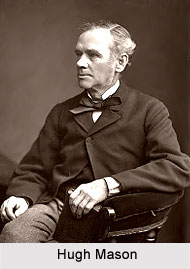 The history of establishment of cotton industry in India has a rich past. With the gradual inaugurations of a number of beneficial industries in India by the English, the country was opening its eyes to a whole new era of mechanisation. Within the early 19th century, India had successfully grounded major production industries, owing to the initiative of the British East India Company and the assistance of English Crown back in England. Cotton was an essential staple fabric, which was needed in almost every work of life. This was the precise industry which fostered a humble beginning, attracting budding Indian industrialists to rake in the moolah.
The history of establishment of cotton industry in India has a rich past. With the gradual inaugurations of a number of beneficial industries in India by the English, the country was opening its eyes to a whole new era of mechanisation. Within the early 19th century, India had successfully grounded major production industries, owing to the initiative of the British East India Company and the assistance of English Crown back in England. Cotton was an essential staple fabric, which was needed in almost every work of life. This was the precise industry which fostered a humble beginning, attracting budding Indian industrialists to rake in the moolah.
Towards making that dream into a reality, in 1854, James Landon established the Broach Cotton Mill, the first successful cotton mill in Bombay. In 1856, the first steam-driven cotton mill also went into production. By 1883, seventy-nine cotton mills were in operation, as Bombay took the industrial lead. This establishment of cotton industry was thus an initiation of a new history.
In 1855, the first mechanised jute mill began operations in Bengal. By 1913, sixty-four jute mills existed in Bengal, with 36,000 looms employing a total of 225,000 workers.
On October 1861, the Government of India issued a waste lands order for the purpose of encouraging the growth of cotton. This came in consequence of diminished cotton imports from the United States due to the American Civil War.
In 1862, Hugh Mason, Chairman of the Board of the Manchester Cotton Company, sought the impeachment of Sir Charles Wood (1800-1885), Secretary of State for India. Mason felt the Government of India was holding to a do-nothing policy regarding the provision of greater supplies of raw cotton to Manchester`s manufacturers.
In the same year, A. N. Shaw, British Collector of Dharawar, successfully grew a New Orleans variety of long staple cotton which was known as Dharawar-American cotton and consistently earned top price on the Bombay market. Shaw grew 25,000 acres of the adopted plant, which later claimed over 200,000 acres.
1894. The Lancashire cotton industry placed sufficient pressure on the Secretary of State for India to have the Government of India place a five percent tariff on Indian cotton manufactures in order to allow British cotton goods to be more marketable in India. The history of the establishment of cotton industry in India thus unfolds the saga of the initial steps towards industrialization.



















